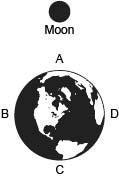
You have a solution of 600 mg of caffeine dissolved in 100 mL of water. The partition coefficient for aqueous caffeine extracted with dichloromethane (DCM, CH2Cl2) is 4.6. Show all calculations for the following (the equation is in your lecture notes): a. How many mgs caffeine would be extracted from the 100 mL of water containing 600 mg of caffeine with two portion of 30 mL of dichloromethane

Answers: 3


Another question on Chemistry

Chemistry, 22.06.2019 06:40
Which statement correctly describes metallic bonds? a. they form when certain atoms lose electrons and other atoms gain electrons. b. they involve an attraction between anions and cations. they always involvpoth a metal and a nonmetal. d. they can only form between atoms of the same element. e. they form because electrons can move freely between atoms.
Answers: 3

Chemistry, 22.06.2019 09:00
What type of energy do chemical bonds have? what type of energy is it converted to during chemical reactions? question 15 options: chemical bonds have kinetic energy, which is converted to potential energy during chemical reactions. chemical bonds have electric energy, which is converted to potential energy during chemical reactions. chemical bonds have heat energy, which is converted to kinetic energy during chemical reactions. chemical bonds have potential energy, which is converted to heat energy during chemical reactions.
Answers: 1

Chemistry, 22.06.2019 13:00
What happens to the average kinetic energy of a gas when the particles of the gas collide against each other at a constant temperature and volume? explain your answer.
Answers: 3

Chemistry, 22.06.2019 17:40
Experiment: effect of solution concentration on reaction rate you have learned that as the concentration of reactants increases, there will most likely be a greater number of collisions, and hence increase the rate of a reaction. in this experiment, you will see a demonstration of this, with a twist. there will be three reactions going on in this experiment. objectives determine how solution concentration can affect the rate of a reaction. the first reaction will be a reaction of the iodide ion (i-1) with hydrogen peroxide (h2o2) in an acidic solution. this reaction produces a slightly orange solution. in our experiment, we will add some orange food coloring to make this solution more orange. 2 h+ (aq) + 2 i- (aq) + h2o2 (aq) ⟶ i2 (aq) + 2 h2o (l) the next reaction will be between the iodine and starch i2 + starch ⟶ i2-starch complex (blue-black) so, when starch is added to the iodine solution made from the first reaction, the solution will turn black immediately, so it is difficult to find the rate of reaction. in order to be able to time this reaction, you will slow it down with another reaction. adding ascorbic acid will react with the iodine, reducing the concentration of the iodine available to react with the starch. c6h8o6 (aq) + i2 (aq) ⟶ 2i- (aq) + c6h6o6 (aq) + 2 h+ (aq) when the ascorbic acid is used up, the remaining iodine molecules can react with the starch and form the black color. the more ascorbic acid you add, the slower the reaction to form the iodine-starch complex will be. use your data and observations to complete the assignment. analysis and conclusions submit your data and the answers to these questions in the essay box below. what was your hypothesis? plot your data as drops of ascorbic acid vs. time. as the concentration of ascorbic acid was increased, did the rate of the formation of the iodine-starch complex increase or decrease? explain your answer in terms of the chemical reactions involved. was your hypothesis correct? make a general rule about the effects of concentration of reactants on reaction rates. for practice, the molecular formula for ascorbic acid is c6h8o6, and you used 6 g in this experiment, calculate the molarity of the ascorbic acid. now calculate the concentration in moles per drop (assume 1 ml = 20 drops).
Answers: 3
You know the right answer?
You have a solution of 600 mg of caffeine dissolved in 100 mL of water. The partition coefficient fo...
Questions

Mathematics, 14.09.2020 22:01

Social Studies, 14.09.2020 22:01

Mathematics, 14.09.2020 22:01

History, 14.09.2020 22:01

Mathematics, 14.09.2020 22:01

History, 14.09.2020 22:01

Mathematics, 14.09.2020 22:01

Mathematics, 14.09.2020 22:01

English, 14.09.2020 22:01

Social Studies, 14.09.2020 22:01

History, 14.09.2020 22:01

English, 14.09.2020 22:01

Social Studies, 14.09.2020 22:01

French, 14.09.2020 22:01

Mathematics, 14.09.2020 22:01

Mathematics, 14.09.2020 22:01

French, 14.09.2020 22:01

History, 14.09.2020 22:01

Biology, 14.09.2020 22:01

Mathematics, 14.09.2020 22:01




